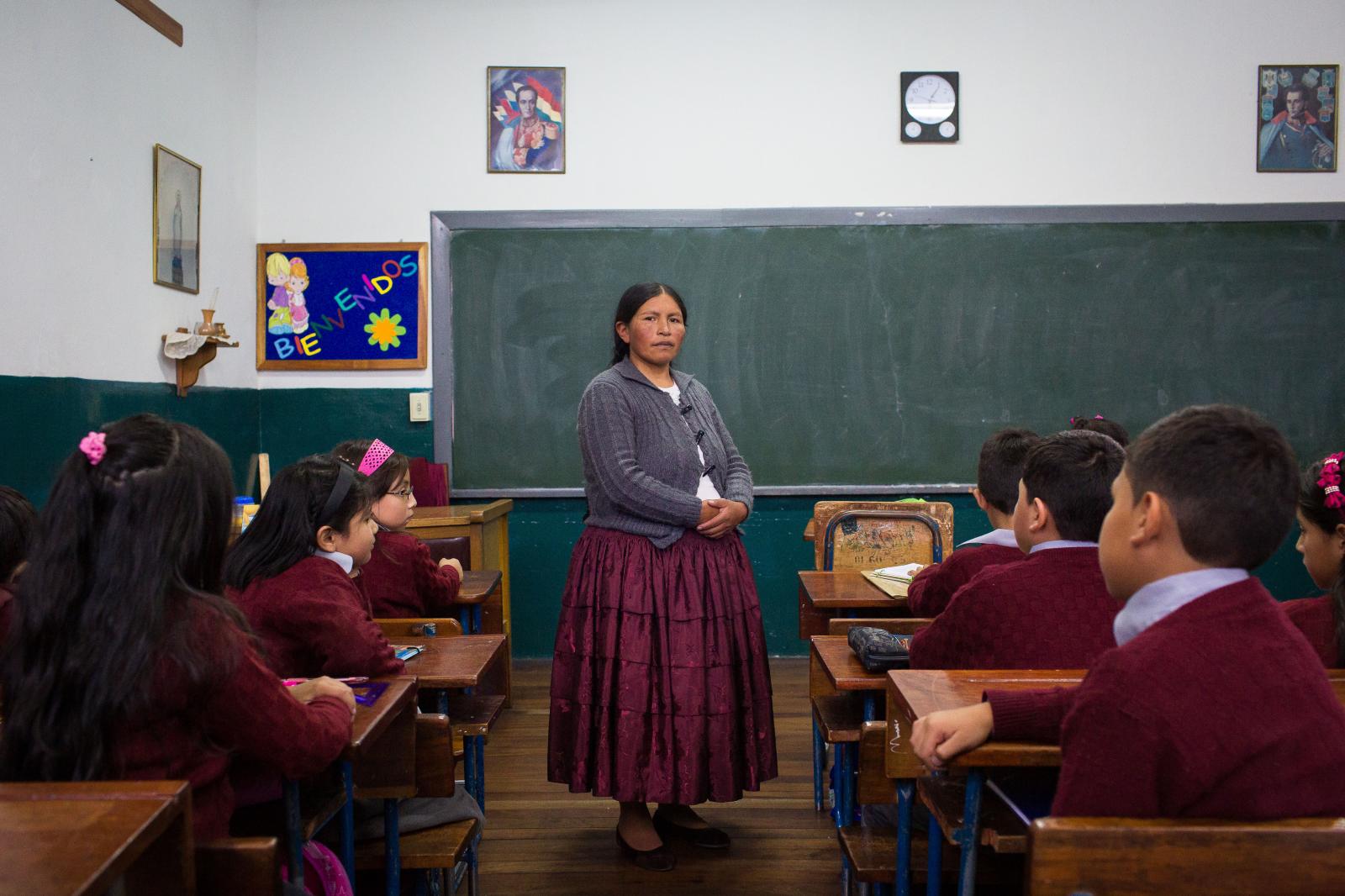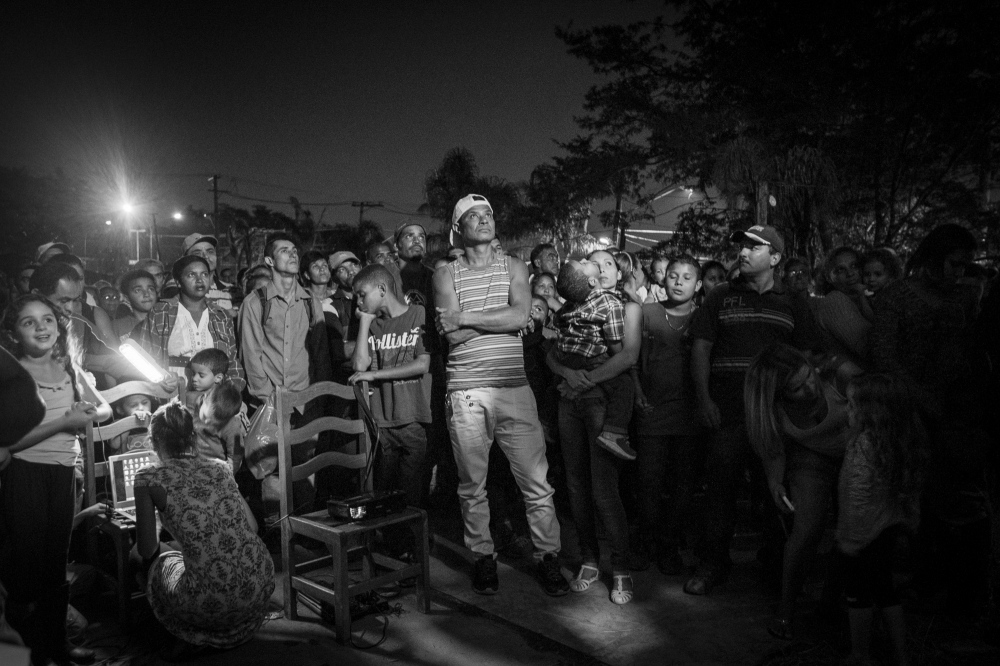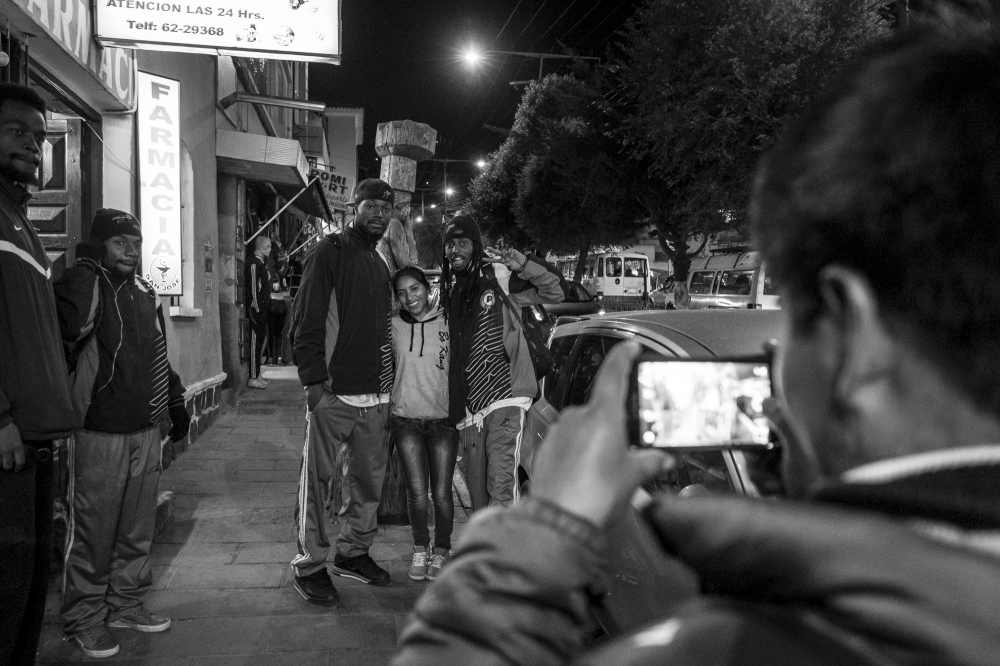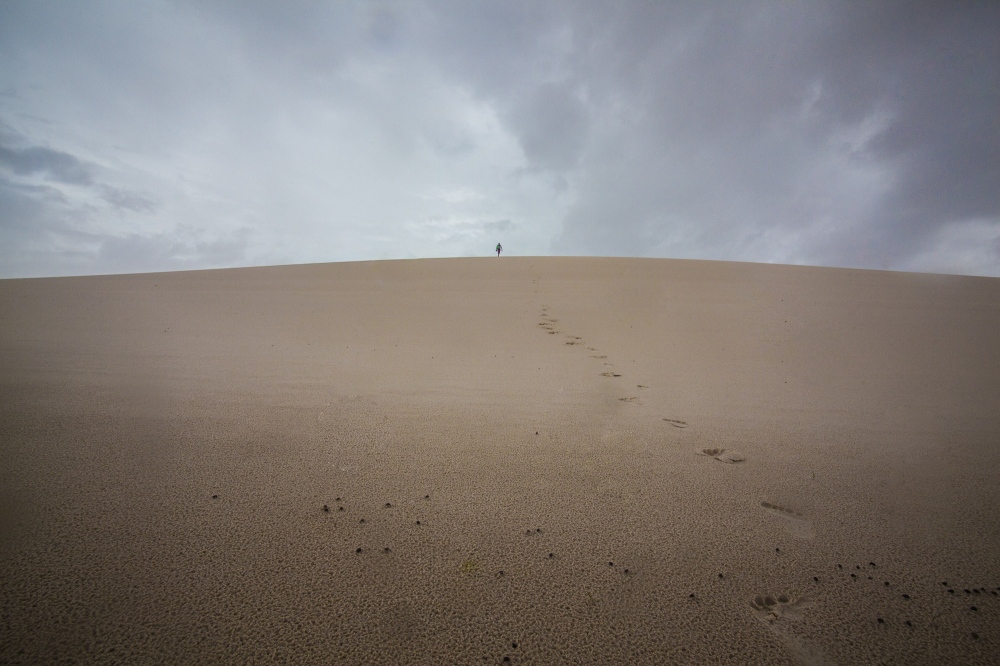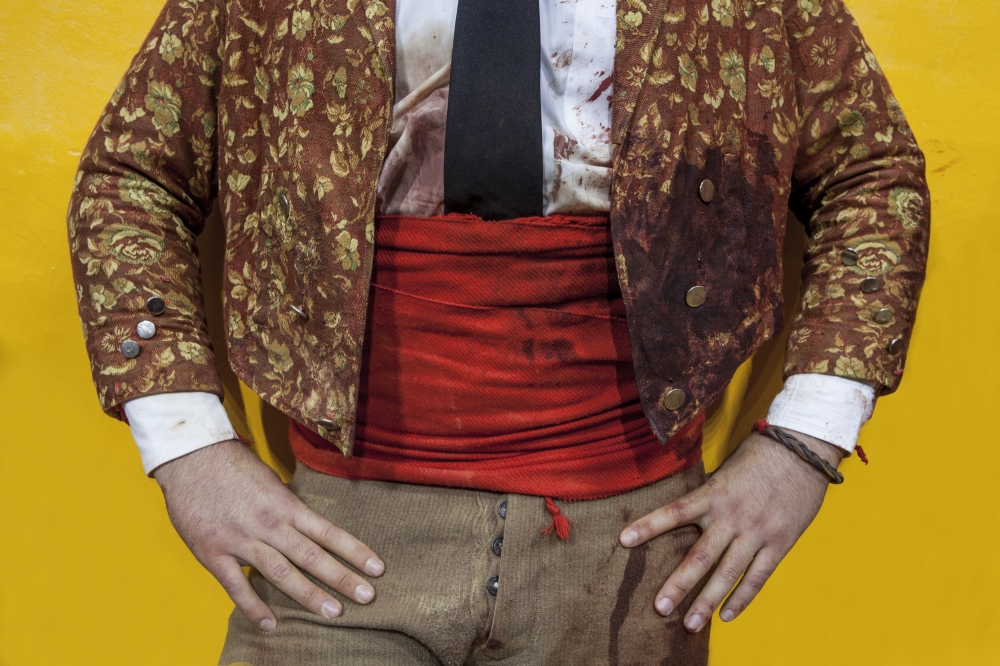
View of the destruction caused by the 16th April earthquake on the island of Muisne. The earthquake reached the magnitude of 7.8 on the Richter scale hit the Ecuadorian coast, where more than a million and half of people live, circa 10% of the total population of the country. In the aftermath, 4,859 were injured and 671 died, mostly because of the collapse of buildings. The areas affected are in a vulnerable socio-economic position, with levels of extreme poverty in some cases, which contributed to the high number of injured and perish people.

Elias Alejandro, 46, is a fisherman in Chamanga and lost his house during the 16th April earthquake. He now lives with his wife and five children in a makeshift house owned by his mother-in-law. Getting a new house is not only his main worry. Since the earthquake there isn’t much fish on the sea, making the survival of him and his family even more difficult. Elias now hopes to get some help from the Government to build a new house, but he doubts it will ever come since he lives in what is considered a high-risk area.

A man carries a sofa back to the refurbished hut on the island of Muisne. Even living in precarious conditions the inhabitants of Muisne refuse to leave the island, even when it’s recommended by the Government since it is considered a high-risk area. The population on the island claim that they were born there and they don’t know any other way of living, so they refuse the abandon the place that they call home for generations.

Two brothers reconstruct the house of their family on the island of Muisne. Even living in precarious conditions the inhabitants of Muisne, refuse to leave the island, even when it’s recommended by the Government since it is considered a high-risk area. The population on the island claim that they were born there and they don’t know any other way of living, so they refuse the abandon the place that they call home for generations.

Maritza Madranda, 40, lives in Chamanga and lost her house during the 16th April earthquake. She now lives in the shelter provided by the Government, since they don’t allow her to rebuild her house because it was situated in a high-risk area. “We were forgotten before the earthquake and will continue forgotten now, this is our destiny”, claims Maritza, that doesn’t believe she will ever have any other help from the Government.

Wilfredo Menezes, 35, fixes the roof on his newly built house in Jama. Even if Wilfredo’s father works in the local council, they didn’t have any help from the Government; instead, they used the savings of the family to build a modest house to shelter five people.

A boy passes in front of a place where before many families lived on the coast of Chamanga. The Ecuadorian Government doesn’t want to rebuild houses on the coast of Chamanga since it is considered a high-risk area, something that the locals deny. The earthquake reached the magnitude of 7.8 on the Richter scale hit the Ecuadorian coast, where more than a million and half of people live, circa 10% of the total population of the country. In the aftermath, 4,859 were injured and 671 died, mostly because of the collapse of buildings. The areas affected are in a vulnerable socio-economic position, with levels of extreme poverty in some cases, which contributed to the high number of injured and perish people.

Antonia Gonzales and Alessandro Campos, on their home on the island of Muisne. They live in that house for more than 40 years and they refuse to abandon it, even if there is pressure from the Government since it is considered a high-risk area. It was their second earthquake and they survived both of them, so they aren’t scared of anything, they say. Furthermore, they claim that the island is their home and they will not leave it because they don’t know any other way of living.

Children ride bikes on a street of Jama, Ecuador in from of one of the many collapsed buildings. By Government sources, more than 50% of Jama was destroyed by the earthquake. The earthquake reached the magnitude of 7.8 on the Richter scale hit the Ecuadorian coast, where more than a million and half of people live, circa 10% of the total population of the country.

The empty space left by the demolished Portoviejo Shopping Mall in Portoviejo. The building was demolished on the 29th of July 2016. Portoviejo’s town centre is closed to the public and secured by the army since most of its buildings were heavily damaged by the earthquake, turning it into a ground zero area.

A man waters debris in Portoviejo, Ecuador, in order to settle down the dust from the buildings collapsed by the earthquake. Portoviejo’s town centre is closed to the public and secured by the army since most of its buildings were heavily damaged by the earthquake, turning it into a ground zero area.

A soldier passes by some derelict buildings in Portoviejo’s centre. He uses a mask to avoid breathing the dust that fills the air after so many buildings collapsed. Portoviejo’s town centre is closed to the public and secured by the army since most of its buildings were heavily damaged by the earthquake, turning it into a ground zero area.

Two scavengers cycle around Portoviejo, Ecuador, looking for things among the collapsed buildings in the centre of the city. Portoviejo’s centre due to its old buildings was heavily damaged by the earthquake of 16th April.

Marcos Rosales, 47, takes a break during the works he is doing in his family house, Jama. He is trying to save the unaffected part of the house and replace the affected part with a newly built area. Marcos lost his mother during the earthquake; she was trapped between collapsed walls of the house. He doesn’t believe he will get any Government help, so he started the rebuild of the former house by himself.

The locker room on the fireman headquarters in Portoviejo, with a portrait of the Lady of the Sorrows. The fireman headquarters collapsed during the 16th April earthquake and they now operate under tents until a new headquarters is built.

Firemen relax by watching television during their free time in Portoviejo. The fireman headquarters collapsed during the 16th April earthquake and they now operate under tents until a new headquarters is built.

People doing some shopping in a truck of Tia Supermarkets, Jama. The town's supermarket of the commercial chain was completely destroyed so they operate from trucks until new installations are built.

Narcisa Mera, 53, leaving her improvised kitchen in Sucre Park, the central square in Bahia de Caráquez. Narcissa refuses to move to a shelter provided by the Government because she is afraid that thieves can steal the few belongings she possesses. She claims that shelters are filled with some bad people and she can’t protect her things and her grandchildren. Instead, she prefers to live in the Park in front of her former house that was destroyed by the 16th April earthquake with another 30 families.

One of Narcissa's grandsons, hide his face when he hears conversations about the earthquake. “He got really scared when the earthquake happened. He had many nightmares on the following nights and when replicas occurred” says Narcissa.

Shelter number one of Muisne, Ecuador, houses a total of 165 families. Muisne is one of the poorest areas in the country and was the one most affected, having a quarter of all the people displaced by the earthquake. Many of these people intend to go back to the place where they lived, even if the Government doesn’t offer any help to reconstruct houses in those areas since they are considered high-risk zones. In the Province of Muisne, there are five Government shelters that house 563 families, according to Government figures from August.

Miriam Zambrano (in the centre), 37, works on her sawing machine in a tent at the shelter located on the old airport, Portoviejo, Ecuador, with the help of another lady, while her daughter-in-law takes care of Miriam’s grandson. Miriam managed to recover her sawing machine from the wreckage and kept working as a dressmaker in order to sustain her six children, one daughter-in-law and one grandson. She is happy to be in the shelter and hopes that eventually, she will get a house from the Government.

A girl offers candies to a boy that is inside of a Government shelter in Chamanga. Thousands of people lost their houses with the 16th April earthquake that hit the Ecuadorian coast and many were forced to live in shelters provided by the Government, while new houses are being built. In the Province of Muisne, which Chamanga is part of; there are five Government shelters that house 563 families, according to Government figures from August.

Corporal Quiroz of the Ecuadorian army, looks after some children while their mothers went to collect food in the communal kitchen of the shelter in Portoviejo. The shelters are managed and operated by the army and they try to help the families that live there and that have lost everything on the 16th April earthquake.

Maria Nevares (in the centre) with part of her family in a makeshift tent where they live, Pedernales. Ten people live in Maria’s tent that is set on what was her former house before the earthquake. They pile the mattresses during the day so there is enough space for them to socialize and walk around. Maria complains about the lack of support from the Government, especially because since she doesn’t have papers for her the land where she was born. Without the papers, the Government refuses to build her a new home.

Two makeshift tents on the sidewalk in Bahia de Caráquez. Bahia is a beach tourist destination, especially to Ecuadorians from the mountains, but after the 16th April earthquake, most of the city was damaged and destroyed leaving many locals living in provisional homes all around the city.

A man carries wreckage of the house he is rebuilding in Bahia de Caráquez. Many people don’t believe they will get any Government help, so they have started to rebuild their houses by themselves.

A son helps his father to rebuild a window of their home in Bahia de Caráquez. Many people don’t believe they will get any Government help, so they have started to rebuild their houses by themselves.

A family walks around their land where the foundation of their new home is ready in Rocaforte. The house is being built by the Ministry of Urban Development and Housing (MIDUVI), which started a new rebuilding programme after the 16th April earthquake. The standard house has two small bedrooms and they are valued at US$10,000, which the occupants have to pay 10% of it (US$1,000).

The church in Jama, Ecuador, was almost completely destroyed by the 16th April earthquake, surviving only the end wall and the altar. The parish is now collecting money to rebuild the church.

Zoila Alciva, 78, visits her husband grave in the Jama cemetery. Her husband passed away after he was trapped between collapsing walls of their house during the 16th April earthquake. “He was unable to escape because he was in a wheelchair”, says Zoila. She is a critic of the Government because she didn’t get any help; all the help came from family and friends.

A boy plays a serenade to a girl on the memorial to the victims of the 16th April earthquake in Pedernales. Pedernales was the epicentre of the earthquake, which destroyed much of the city and killed 188 people.

A corporal from the Ecuadorian army takes down the country flag at sunset on the shelter located at the old airport of Portoviejo.






































